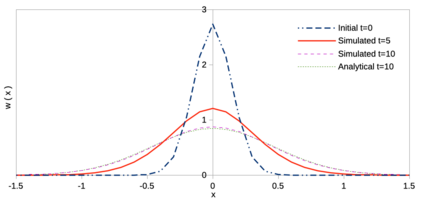We provide a formal definition for a class of algorithms known as "particle methods". Particle methods are used in scientific computing. They include popular simulation methods, such as Discrete Element Methods (DEM), Molecular Dynamics (MD), Particle Strength Exchange (PSE), and Smoothed Particle Hydrodynamics (SPH), but also particle-based image processing methods, point-based computer graphics, and computational optimization algorithms using point samples. All of these rest on a common concept, which we here formally define. The presented definition of particle methods makes it possible to distinguish what formally constitutes a particle method, and what not. It also enables us to define different sub-classes of particle methods that differ with respect to their computational complexity and power. Our definition is purely formal, independent of any application. After stating the definition, we therefore illustrate how several well-known particle methods can be formalized in our framework, and we show how the formal definition can be used to formulate novel particle methods for non-canonical problems.
翻译:我们为被称为“粒子方法”的算法类别提供了一个正式定义。 粒子方法用于科学计算, 包括流行的模拟方法, 如分解元素方法(DEM)、分子动态(MD)、粒子强度交换(PSE)、平滑粒子流体动力学(SPH), 但也包括粒子图像处理方法、点基计算机图形和使用点样样本的计算优化算法。 所有这些方法都基于一个共同的概念, 我们在这里正式定义了这个概念。 粒子方法的提出定义使得可以区分正式构成粒子方法的是什么, 而不是什么。 它还使我们能够定义不同的粒子方法的子类别, 它们在计算复杂性和功率方面有所不同。 我们的定义纯粹是形式化的, 独立于任何应用。 因此, 在说明定义之后, 我们说明如何将几个众所周知的粒子方法正式化在我们的框架中, 我们展示了如何使用正式定义来为非癌症问题制定新的粒子方法。








